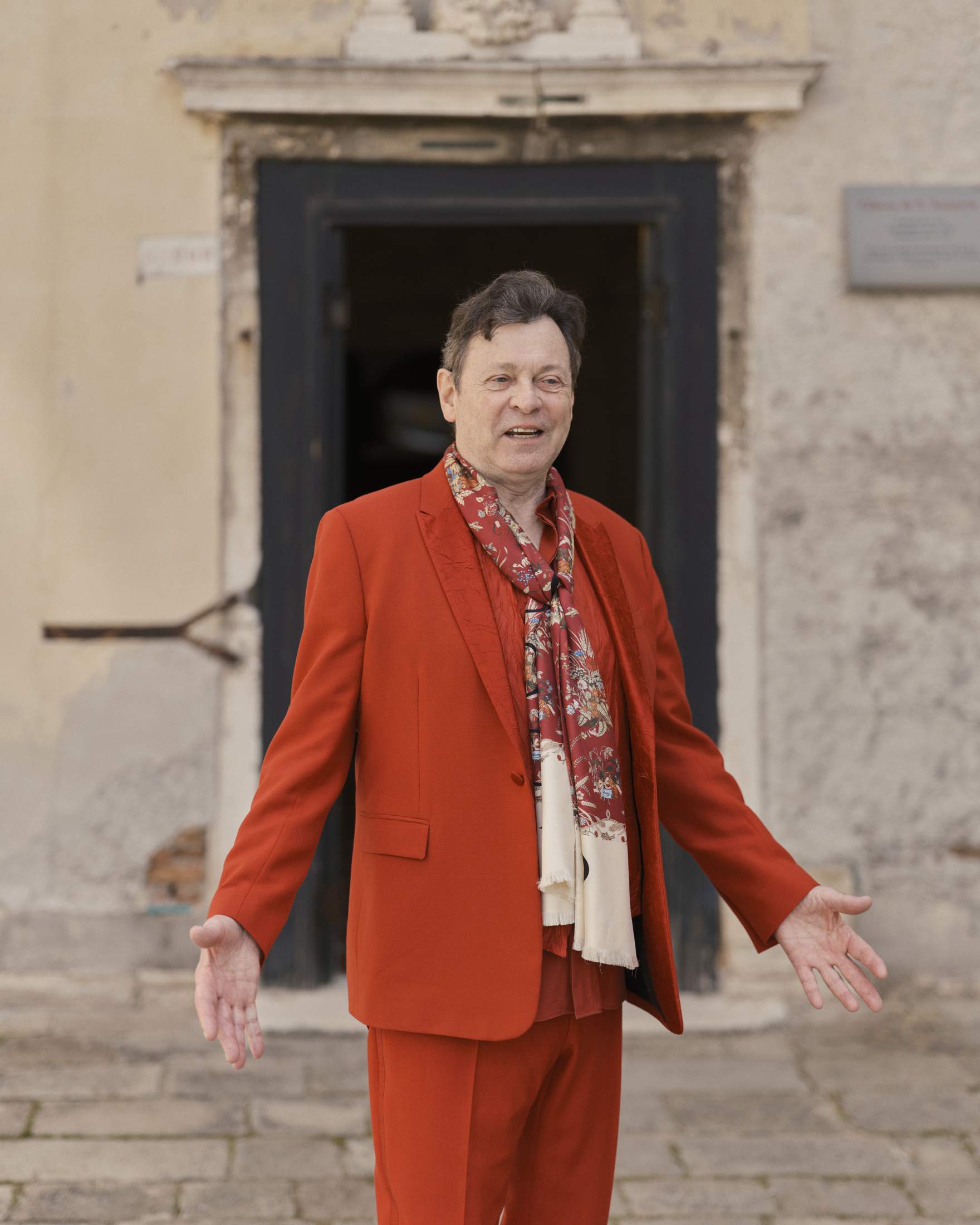Culture / Venice
Collective endeavour
Enabling emerging artists to exhibit their work in the right spaces requires a concerted effort. Bruce Bailey is making it happen.
Bruce Bailey cuts a striking figure in front of the Chiesa di San Samuele on the opening day of his new exhibition, Beati pacifici: The Disasters of War and the Hope for International Peace, which runs at the same time as this year’s Venice Biennale. Wearing a red suit and vintage Saint Laurent silver loafers, the Toronto-based collector and philanthropist is unafraid to stand out. Though his attire is conspicuous, Bailey has been quietly working to support the Canadian cultural scene and revive the lost practice of the art salon over the past few decades.
The 200 works inside the church are from Bailey’s personal collection, which is usually housed in Ontario, and are illustrative of his wide-ranging taste. The exhibition’s focus on war art was not only intended to document the dark side of human nature. “I want to show that we must take the responsibility to stand up to evil and oppression,” says Bailey. The curation begins with a series of chilling 17th-century etchings by Jacques Callot based on the Thirty Years’ War. “There weren’t any war correspondents in those days,” he adds. “Callot went to the source to depict brutality. He also wrote text below his works, so they’re almost like early versions of comic books.”
From here, Bailey’s selection travels forward in time, passing by some of the greatest envoys armed with paint and a brush, including Francisco Goya and Otto Dix. Visitors are then brought up to the present with Peter Doig’s depiction of Toronto’s famous Rainbow Tunnel and a work by Tyler Bright Hilton, a Canadian artist who Bailey has been supporting.

Art didn’t feature in Bailey’s upbringing. His life changed when he went on a school trip to Europe as a teenager. “I was transfixed when I saw Théodore Géricault’s ‘The Raft of the Medusa’ at the Louvre,” says Bailey. “I didn’t see any other artwork that day.” It was not until he was studying to become a lawyer at university that a small scholarship enabled him to make his first foray into collecting. “I bought three prints by Eric Fischl, Michael Snow and Christopher Pratt for a total of ca$5,000,” he says. “I framed them and put them in my student house. I felt terribly sophisticated.” During his subsequent careers as a lawyer and an investment banker, Bailey was able to add to his collection. It now includes everything from sculpture and film to photography and painting. Ever since his first purchase, however, he has maintained a particular fondness for prints and their collectors. “I find that print buyers are more passionate than other people at art fairs, who are often only there in order to buy trophy pieces by established names.”
Bailey believes that it is important for all budding collectors to look at as much art as possible. “I poke my head into contemporary art galleries no matter where I am in the world,” he says. “For me, the process is not to listen with my ears but to look with my eyes and my heart.” He tries to make decisions about a piece before learning about the artist. By acting on this impulse and buying from artists’ first shows, Bailey was able to become an early collector of work by Thomas Demand, Kiki Smith and Marlene Dumas. “It wasn’t that I was smarter than anyone else,” he says. “I could only afford to buy from artists before they became more well-known and, thankfully, I was able to do this before the game changed.” Bailey laments the recent rise in intermediaries who create a distance between the buyer and an artwork.
These frustrations led Bailey to invest more time into his philanthropic endeavours, including the financial support of the Montréal Museum of Fine Arts and creation of his own arts incubator. The programme champions lesser-known Canadian artists by giving them their first show and pushing them to receive commercial gallery representation. Bailey credits this work with helping to launch the career of Canadian First Nations painter and performance artist Kent Monkman.
Bailey also believes in the power of art to forge connections and aid dialogue between nations. In 2011, the National Gallery of Canada became the official commissioner of the country’s pavilion in Venice. “This shows that the state uses art and music as forms of diplomacy,” he says. While his collection might have started as a group of artworks that captured his imagination, it has evolved to become a gathering point for the community. His art-salon summer garden parties, or fêtes champêtres, aim to build bridges between English- and French-speaking parts of Canada through a shared experience of culture and nature. “It’s a neutral ground where people can enter into conversation and discuss their personal history,” he says.
These interactions help assuage Bailey’s worries about his legacy and the as-yet-unknown future destination of his art. He is reassured by how the collection has brought people together in Canada – and elsewhere in the world. “We all want to seek meaning in our lives,” he says. “Being a collector is not only a question of accumulating art but also how you can then use it to create a better society.” In a similar vein, Bailey believes that you can give people who you pass on the street a “visual treat” by way of a thoughtful or surprising outfit. With his opening dinner at the Venice Biennale approaching, Bailey gets up to return to his hotel. He has, of course, a dramatic costume change to make.
‘Beati pacifici: The Disasters of War and the Hope for International Peace’ runs at Chiesa di San Samuele in Venice until 29 September.


